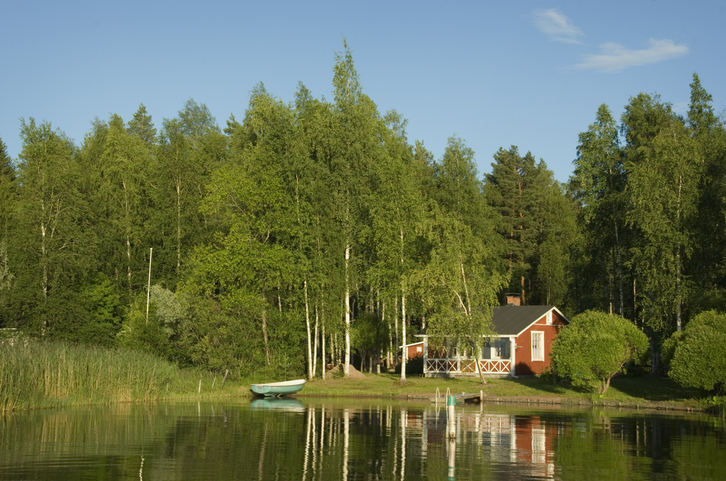If you’re considering how to retire in Finland, you’re looking at one of Europe’s most livable and scenic destinations. As of 2024, Finland continues to rank at the top of the World Happiness Report — a reflection of its high quality of life, strong social services and stunning natural landscapes. Often referred to as the Land of a Thousand Lakes, Finland offers peaceful surroundings, clean air and a deep appreciation for nature. The country also boasts a stable economy, a high-performing healthcare system, and a population where nearly 75% of residents speak English, especially in urban areas.
Retiring abroad takes careful planning. A financial advisor can help you prepare by reviewing your retirement savings, navigating international tax rules and creating a financial strategy tailored to your move overseas.
Cost of Living and Housing
The cost of living in Finland including rent is 22% lower than in the U.S., according to Numbeo.
A one-bedroom city center apartment’s rent can run about $840 per month. Alternatively, the same-sized apartment can cost around $7680 outside that central hub. The further you look outside urban areas for rental properties, the less expensive you’ll find them to be. When compared to costs of living in the U.S. city centers, rent may cost upwards of $1,740, and $1,330 outside the city center.
If you are looking to retire in Finland or spend years there, it might be best to consider buying your own home. Interest rates on housing loans in Finland have been on a steady decline for years. Helsinki, the nation’s capital, is amongst the lowest mortgage interest rate in the eurozone.
Visas and Residence Permits in Finland
One of the main things to know about retiring abroad is getting a residence permit. The process is fairly straightforward. However, it has to be done on a personal basis; no one can apply for another person.
There are two types of residence permit categories: Temporary Residence Permits and Permanent (Extended) Residence Permits. You can get Permanent Residence after living in Finland with a permanent residence permit for four or more years. You should seek out an application for the permit from the Finnish embassy located in your country or the embassy of a Schengen country representing Finland. Also, you can apply using the Enter Finland online service to help book an appointment and begin the application process.
You will have to go through a background check to obtain your permit. You’ll also have to prove specific requirements down the line to become a Finnish citizen, such as fluency in the national language.
Healthcare in Finland

The Finnish healthcare system focuses on preventing illnesses, in part through effective health and nutrition-focused education. Before an expat can utilize Finnish healthcare benefits, however, they have to register for the National Health Insurance (NHI). You can only do this after four months of living or working in Finland.
Once you register, you’ll receive a Kela card, which can be brought to pharmacies and clinics to help you get instant reimbursement for any payments. However, the amount paid back is decided on a case-by-case basis, which can underline the importance of private health insurance for some.
Each municipality is responsible for the healthcare of those living within its boundaries. Thus, doctors are responsible for a specific number of patients and create longer-lasting treatment relationships. Patients’ needs are addressed more quickly, and they work with a practitioner they know. Public hospitals can mean wait times, however, so some supplement with private healthcare as well.
Education in Finland
The nation has one of the most successful educational systems in the world. Literacy, for example, is virtually universal in this Scandinavian nation. Part of the reason for the country’s top-notch educational system is the higher academic standards required of elementary and secondary teachers.
Every year large numbers of international students come to Finland for the free tuition available at Finnish universities. Thousands of international students head to Finland each year to take advantage of the no-cost education at over a dozen universities.
Finland also boasts an impressive roster of institutes of technology for the scientifically inclined.
Taxes in Finland
A person’s liability to pay Finnish tax is dependent on their residence status. After someone has stayed in Finland for six months or has a permanent home in the country, they’re deemed a resident. Finnish residents pay progressive income tax rates based on their total assessable income and the municipality they live in.
These taxes are applied to their worldwide income or money they make both inside and outside the country. Conversely, a non-resident is only taxed on income earned from sources in Finland and pays a flat 35% tax rate. Depending on the circumstances, a non-resident can apply to pay progressive tax rates instead.
Finland is a rare country that pursues double taxation treaties with foreign countries, providing some relief to people seeking dual citizenship. This can be a huge benefit if you plan on making Finland a permanent home.
Safety of Living in Finland
Finland is one of the safest countries, if not the safest, to travel in. The country even has one of the world’s, “most effective and trusted police forces,” according to the U.S Department of State. As with any country, you should be aware of the possibility of petty crimes such as pickpocketing, which tends to increase during the tourist season. However, other certain low-level crimes such as bicycle theft and car burglaries have been trending downwards since the early 2000s.
If anything should concern a newcomer, it’s Finland’s winter rather than its crime rates. The country experiences extreme levels of cold. In Helsinki during February, the average temperature ranges from 19 degrees F to 28 degrees F. So, travelers and visitors should prepare for the weather with appropriate clothing and research how to handle any snow or ice ahead of time.
Bottom Line

Finland is often seen as one of the best countries to retire in, especially for anyone who wants a safe, comfortable location to retire in. Those who love being surrounded by pristine nature will feel most at home here. However, harsh winters and a high cost of living can keep the more frugal retiree at bay. Your personal situation will decide if this haven of education and the midnight sun is the right place to spend your golden years.
Tips on Affording Retirement
- Moving abroad takes more than financial stability. A financial advisor can work with you to break down all the necessary preparations, such as what to expect with tax implications. However, finding the right financial advisor for you doesn’t have to be hard. SmartAsset’s free tool matches you with up to three vetted financial advisors who serve your area, and you can have free introductory calls with your advisor matches to decide which one you feel is right for you. If you’re ready to find an advisor who can help you achieve your financial goals, get started now.
- Depending on the individual, one’s Social Security benefit value may be enough to cover these expenses. Using this Social Security calculator, you can estimate your benefit amount.
Photo credit: ©iStock.com/basiczto, ©iStock.com/Sasha_Suzi, ©iStock.com/ssiltane
